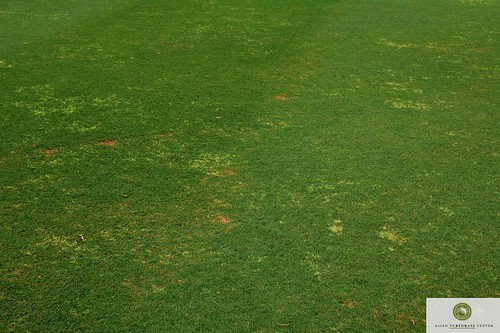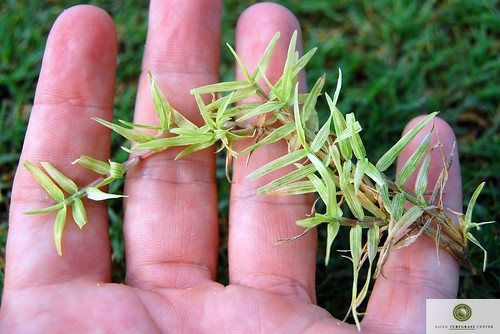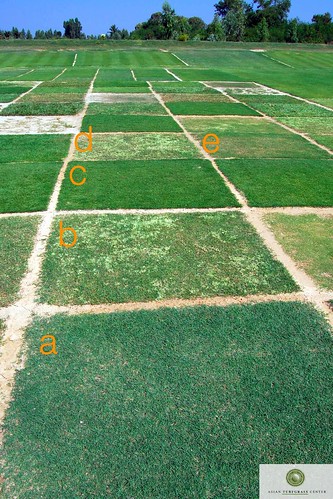
I call this a disease only because the Compendium of Turfgrass Diseases lists it as a mollicute disease. But it is not a fungus, and cannot be controlled with any pesticide. The only way to get rid of it is to physically remove the infected plants. That is the bad news.

Once you have this bermudagrass white leaf on your golf course, you can expect to have entire plants that lose chlorophyll and turn yellow or white and then eventually die. In studies conducted at the Asian Turfgrass Center in 2007 and 2008, we determined that infected plants usually die from four to twelve weeks after symptoms appear. The symptoms are caused by a phytoplasma and that phytoplasma is transferred from plant to plant by insect vectors such as leafhoppers.
Now for the good news. First, the infected plants do die and are overtaken by healthy, chlorophyllous plants. Second, the bermudagrass white leaf infections tend to be most extensive on newly-established golf courses, and after two years of growth the problem seems to diminish. That makes sense, because plants without chlorophyll are not going to be successful in competing with healthy plants, so one of the recommended treatments for bermudagrass white leaf is simply to manage for healthy bermudagrass and you will choke out the infected plants. Thirdly, and what I found most surprising, is that there seems to be big differences in the susceptibility of different varieties of bermudagrass to bermudagrass white leaf.
We grew varieties such as Tifsport, common, Savannah, Riviera, Tifway, Tifgreen (or similar, collected from a golf course supposed to be planted to Tifgreen), Mountain Green, and Tifdwarf, among others, all grown under the same conditions in adjacent plots. What we noticed, and measured, was that certain varieties seem especially susceptible to bermudagrass white leaf infection. At a time when Tifway and Tifsport and Mountain Green had less than 10% infection, varieties such as common, Savannah, and Riviera had more than 60% infection.

In the photo above (click to view a larger version), plots maintained as fairway at Asian Turfgrass Center's research facility near Bangkok show different susceptibility to bermudagrass white leaf.
a - Tifway, no infection
b & d - Riviera, severe infection
c - seashore paspalum, immune
e - Tifsport, minimal infection
My advice about managing bermudagrass white leaf is to choose a variety that has less tendency to become infected (such as Mountain Green, Tifsport, or Tifway), perform cultural practices to encourage healthy bermudagrass and the white leaf will eventually go away, and do not buy stolons or sod from a nursery where this pathogen is present.


















4 Responses to “A Most Unsightly Disease”
I would like to add that, I had the same symptoms on Seaspray seeded paspalum on couple of my greens but not on fairways or tees.
That is very interesting about Sea Spray. We have grown Sea Spray at Thailand under fairway and green conditions and never saw that type of whitening. If you have any photos of those symptoms, I would love to see them.
It may be the different genetic structure of the bermudas. The vegetatives are all triploid with one set of chromosomes from C. trasnvaalensis while the seeded are all C. dactylon var. dactylon.
Its interesting you do see this genetics. We had a report of white leaf on some bents in the SF Bay area last year but as the plants died it quickly went away. I also saw the reports about the transmission. They had previously seen it some on Poa annua in the same area but I was uncertain if the same strain could get both species.
Leah Brilman
Hi Micah,
I have been coming across it a lot recently in India, as mentioned its worst on Riviera but Tifway 419 is also getting it at very high percentage.
Do you think Mg can play a role in this?
Post a Comment